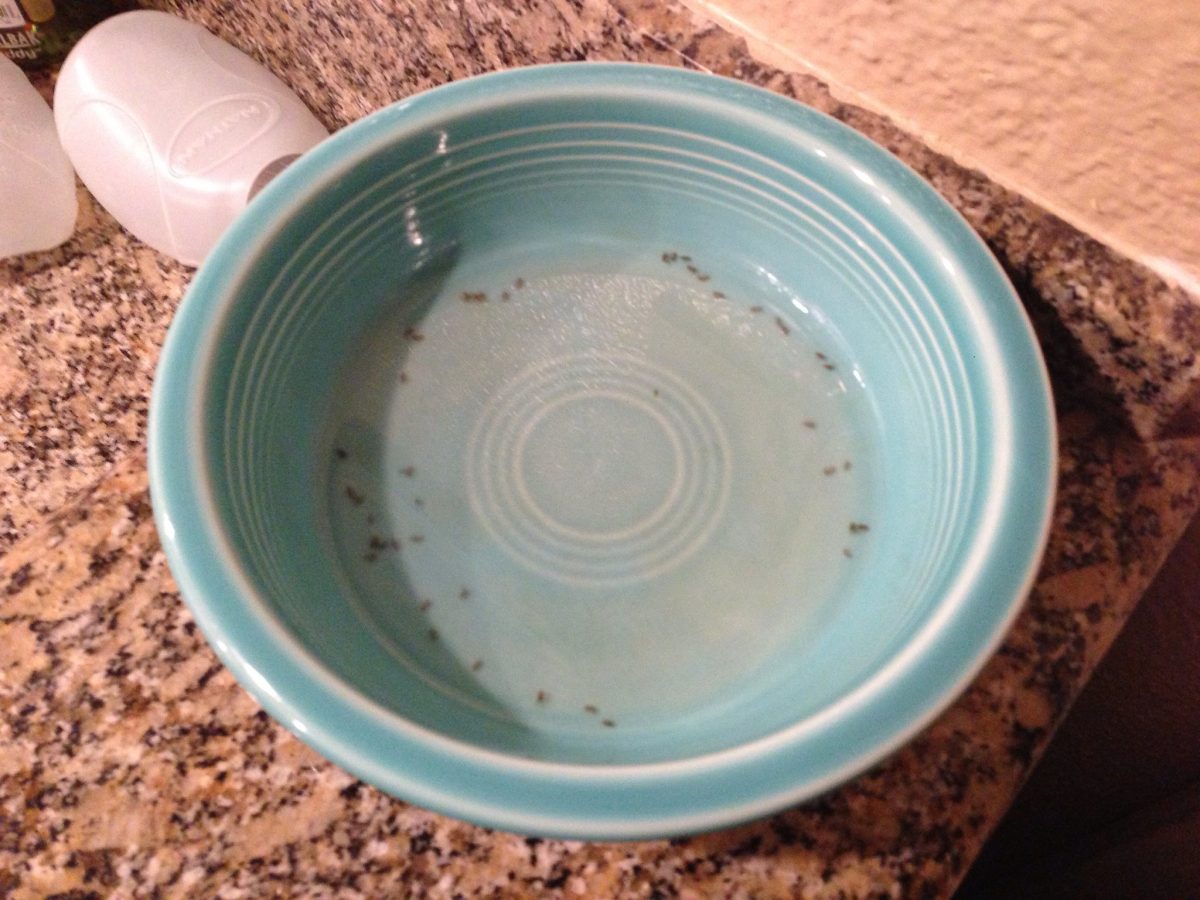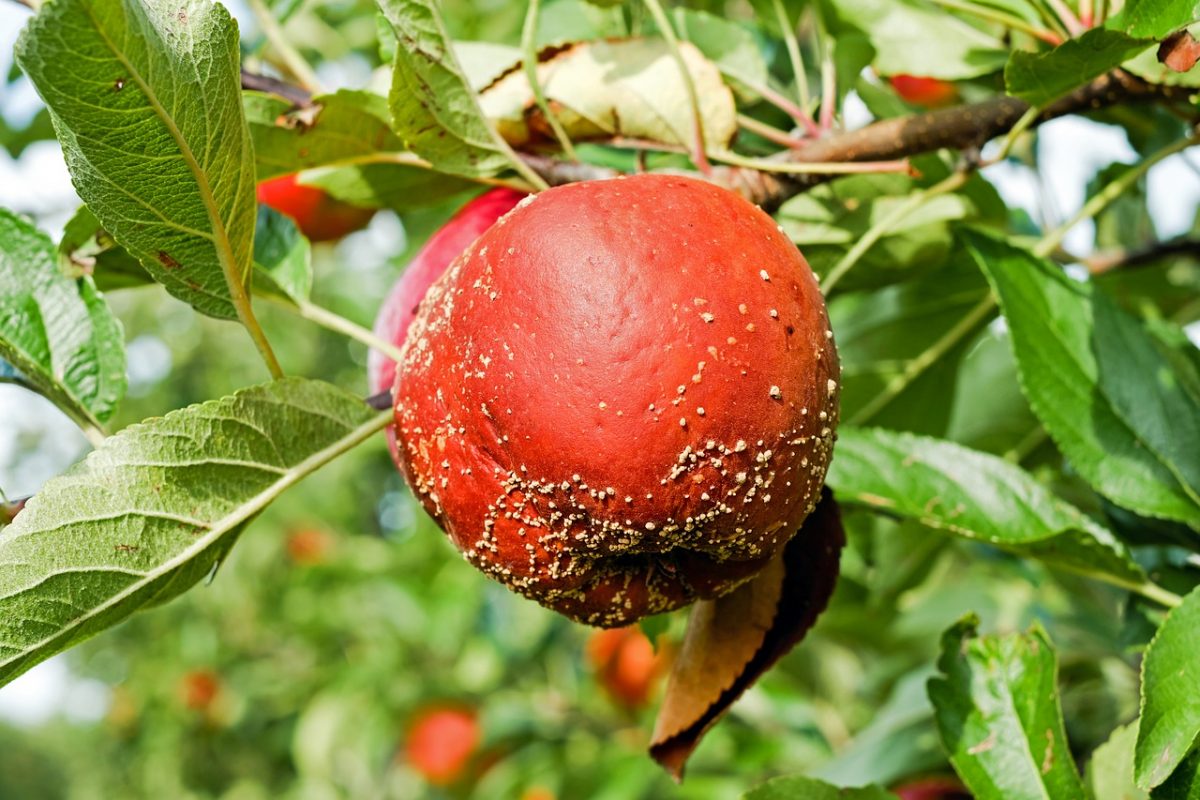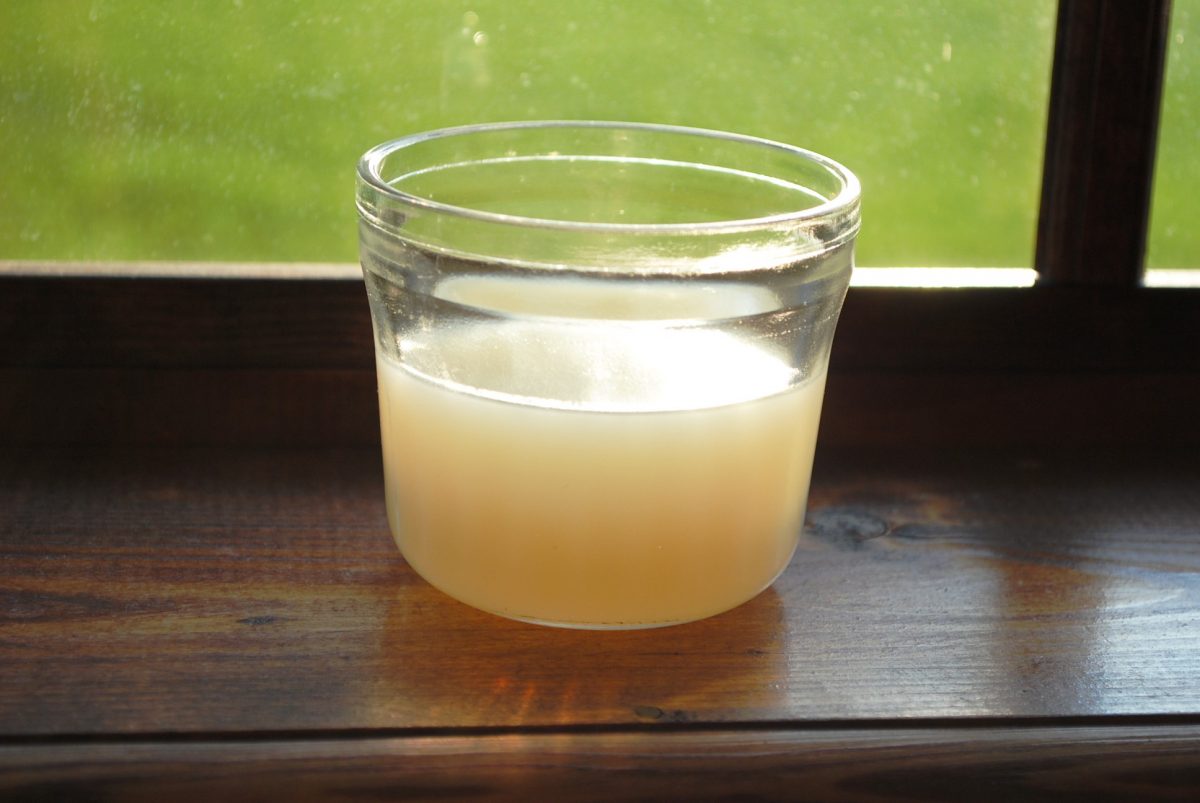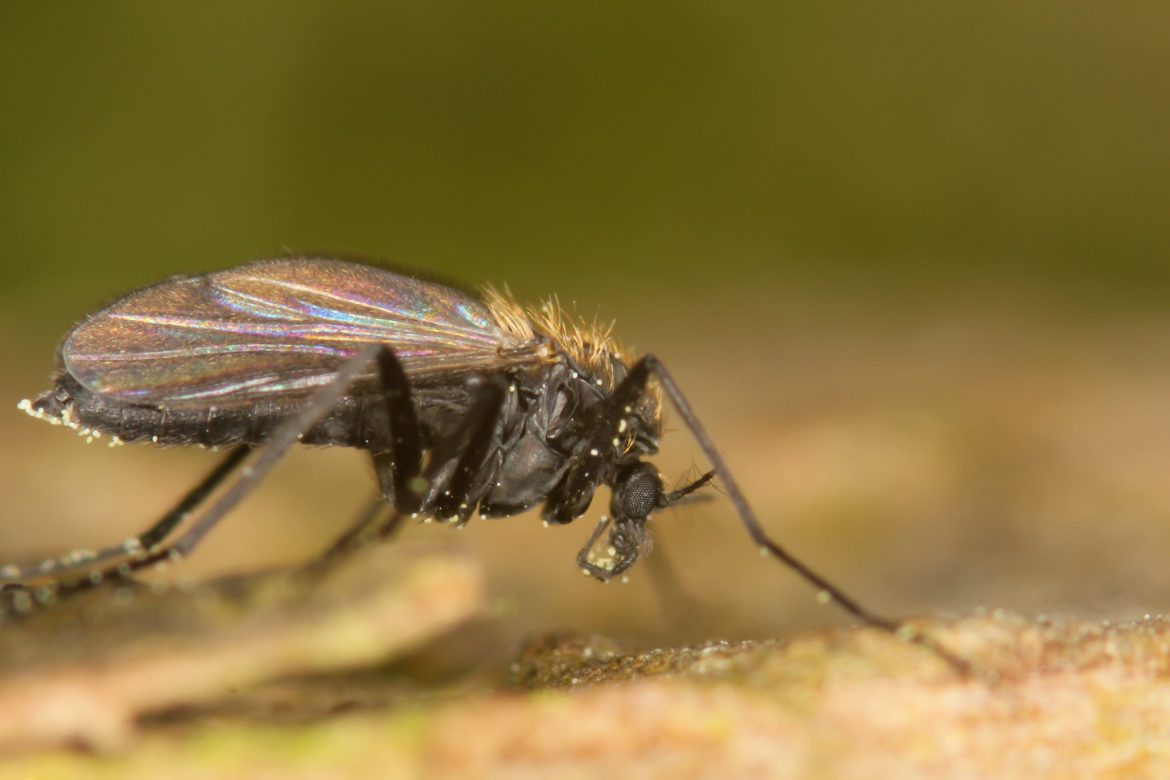How to get rid of gnats? There are many different methods you can use to go about getting rid of them. However, the first thing you must figure out is what causes the appearance of gnats in your house in the first place. The most common culprit is the presence of rotting fruit in your trash. They are also attracted to spoiled food, dirty dishes, and even damp potting soil that has been left in the open. How to get rid of fruit flies and gnats? Make sure food waste is thrown away properly.
There are store-bought gnat repellents, but these can be dangerous to your health and the environment. Don’t fret, though. In this article, we’ll also provide you with an easy homemade gnat spray that’s effective, but safe to use.
Where Do Gnats Come From?
The term “gnat” doesn’t just refer to one particular insect. It is used to describe a number of flying insects, which include fruit flies or baby flies. They do have one thing in common, however: we don’t want them in our households.
So, what causes gnats to be in your house?
These insects do not need a big opening in order to get indoors. They are usually smaller than mosquitoes so they’ll fit into small holes in window screens. If you have openings for utility lines or gaps around your doors, they’ll use that as entrance as well!
What attracts gnats? As we’ve established, it’s food waste that draws them in. They can also be attracted to overly ripe vegetables and fruits. This is why they’re a common sight in food gardens and around fruit trees.
Garbage receptacles that have not been properly covered will also cause gnats to gather. Did you know that they can also be drawn to light fixtures?
How Long Do Gnats Live?


The favorability of their chosen habitat greatly affects a gnat’s lifespan. For example, fungus gnats develop best in potted indoor plants and ornamental plants kept inside malls or offices. The more overwatered these are, the better it will be for fungus gnats. This is why plant owners need to be more aware of their watering habits. The idea is to keep the soil moist, not damp.
The lifespan for gnats are as follows:
- Fruit flies: 40 to 50 days
- Phorid fly: 8 to 14 days
- Fungus gnat: one to two weeks
- Moth fly: 14 days
How to Get Rid of Gnats in Kitchen
First off, you have to pay attention to what attracts gnats to your kitchen. Here’s a checklist you can follow to help you keep track:
- Check bins for food waste that was not disposed of properly.
- Overripe fruits and produce that are exposed.
- Food waste or scraps trapped in the kitchen sink, which attract drain flies.
- Kitchen plants with damp soil.
- Any damp areas or places where dirty water collects.
- Opened bottles of liquor and beer.
Remember that gnats have a very keen sense of smell. Double check your disposal for any possible openings. Make sure there are no leaking pipes or moisture on your kitchen windowsills.
How to Get Rid of Gnats Naturally
Before we get into home remedies you can use against gnats, let’s talk about practical changes you can do in and around your kitchen.
- Keeping food waste in the fridge. By doing this, you can prevent attracting gnats into your kitchen. It will also help lessen the smell that comes with it. The idea is to keep the scraps in a Ziploc bag and keep them in the fridge until you need to throw them out.
- Keep the space clean. Take out the garbage regularly and always check your produce for signs of rot. You can use a gnat repellent regularly, but if you don’t maintain cleanliness in your surroundings, the same issue will happen again.
How to Get Rid of Gnats with Dawn Dish Soap


This is one of the most efficient and environmentally-friendly ways to get rid of gnats. All you need are a few drops of dawn dish soap and about a tablespoon of sugar.
- Mix the sugar and dish soap in a container. Melt the sugar properly.
- Place this near the kitchen sink, near the trash, and in the pantry.
- The scent will attract the gnats and once they make contact with the liquid, they’ll end up stuck in it.
Why dish soap? It prevents the gnats from flying and escaping the mixture, effectively killing them in the process.
How to Get Rid of Gnats in Bathroom
One of the most common types of gnats you’ll find in the bathroom are drain flies. These insects are typically found in drains, sewers, and septic tanks. Basically: in the pipes. While they do not bite or sting, they can become a nuisance if they grow in number. Not to mention, they leave your bathroom unhygienic.
How can you tell if you have drain flies in the bathroom? Check for signs of infestation near drains or sinks. You’re likely to see them more if the area has been stagnant for a while. Such is the case with infrequently used guest bathrooms, or times when you’re away on holiday.
These flies have brown or gray colored wings, and will leave a powdery residue if you accidentally hit them. They are quite tiny, measuring only an eighth of an inch.
How to Get Rid of Gnats with Bleach


In some cases, the use of the dish soap and sugar technique will not be as effective. For this, you can use bleach instead.
- Put some safety gear on. This is so you can avoid inhaling the fumes.
- Dilute bleach with water. Half a cup to one gallon of water should be enough.
- Slowly pour the mixture down the drain, about a cup at a time.
You might need to repeat this until the infestation of drain flies disappears. Another thing you can do, particularly for infrequently used bathrooms, is to turn on the shower and tap once a day. You need not do it for very long—the key is in the consistency. By making sure the pipes don’t go stagnant, you can prevent gnats from turning it into their habitat.
How to Get Rid of Gnats in Yard and Garden


If you thought gnats are hard to get rid of indoors, you’re facing an extra challenge when the issue is outdoors. The most common gnats you’ll find in your yard and garden are fungus gnats. They are mainly found in damp soil and would feed on plant roots. This causes the plant to turn yellow, drop leaves, and eventually die.
That’s not the worst bit. Fungus gnats are also known to spread pathogens that can actually kill seeds before they sprout or weaken any newly-sprouted seedling. They are basically every gardener’s nightmare.
Fortunately, there are ways of getting rid of them.
DIY Gnat Trap
You can purchase a pack from the store or try our DIY trap that you can easily make at home.
- Find a small jar or a container with a small opening.
- Mix together vinegar, wine, and beer together. Add this to the jar.
- Place a paper cone on top of the jar to serve as its lid. If you can, use yellow-colored paper or card stock. This is because gnats are attracted to the color yellow.
- Leave the trap in the areas you find the most gnats in. The more traps you have, the better.
Note that this DIY gnat trap is meant to be used over and over again. Gnats are likely to return to your yard, so just leave them and refill as needed.
How to Get Rid of Gnats in Plants
Gnats are very persistent and destructive little creatures when it comes to plants. They can kill your houseplants easily and even destroy your food garden, if left untreated. Gnats can even attack fruit bearing trees, sometimes causing irreversible damage. Their larvae can burrow into the soil, taking up nutrients and can chow down on tree roots easily.
Adult fungus gnats are more of a nuisance, but they are still part of the problem.
Using commercial pesticide is an option, but one that we don’t really recommend. It is harmful to the environment and might render your produce inedible. Instead, choose to go natural when fighting back against these pets. Here are some options you can try:
How to Get Rid of Gnats with Apple Cider Vinegar


This multi-purpose pantry essential is a gardener’s best friend. It also doesn’t do much damage to plants and because it’s completely natural, so you need not worry about it leaving behind toxic residue.
- Mix together one-part apple cider vinegar and one-part water.
- Fill a shallow saucer with this mix.
- Add about two to three drops of citronella essential oil.
- Place these near the affected plants.
- Top up the mixture as needed.
Pro-tip: if you want to lure the fungus gnats to your trap, try adding a small piece of banana on top of the mixture.
How to Get Rid of Gnats with Food-Grade Diatomaceous Earth
Known in the market as DE, this is a purely organic yet abrasive powder that you can use to kill gnats in the soil. It is safe enough for your indoor plants as well!
- Sprinkle a generous amount over dry soil. This is important. If you use it on wet soil, the moisture will render DE useless.
- To make sure DE stays dry after application, you can add a layer of sand on top of it.
- DE will trap the fungus gnats in the soil until they die from dehydration. The process usually takes a few days, so during this time, water your plants from the bottom.
Pro-tip: DE can be used a few times a month. Even fruit-bearing trees can benefit from its use.
How to Get Rid of Gnats – Avoid Using These Outdoors
- Flypaper ribbons. These are great for use inside your home, but do avoid using them in your garden. Flypaper will trap just about any insect, including those that are actually beneficial to your garden!
- Bleach. It is incredibly toxic for your soil and can kill off your plants.
Garden Tips to Avoid Fungus Gnats Infestation:


Aside from using the natural home remedies we have given above, it is also important to keep your garden clean.
- Pick up any rotting fruit or plants and dispose of them properly.
- Do you have buckets or pans collecting dirty water? Throw out the liquid and store them properly.
- Avoid overwatering your plants by creating a schedule.
- Ensure that there is ample airflow and sunlight between your plants.
- Do regular checks so you can nip the problem at the bud.
Homemade Gnat Spray Using Essential Oils
Tempted to just fog your home with store-bought gnat sprays? Don’t. This can be very bad for your health and won’t always work. Instead, use essential oils. These smell great, aren’t toxic, and you can use them liberally indoors.
Try out our recipes below:
Gnat Repellent Tea Tree Oil
- A cup of water
- 12 drops of tea tree oil
- ½ teaspoon of natural soap (castile soap or dish soap is fine)
You can also opt to directly pour some tea tree oil down infested drains.
Peppermint Oil Homemade Gnat Killer
- A cup of water
- 15 drops of peppermint essential oil
- ½ teaspoon of liquid dish soap
Peppermint oil is known to kill gnat eggs and larvae.
Neem Oil Spray to Kill Gnats on Plants
- One cup of warm water
- A couple tablespoons of neem oil
- One tablespoon of Castile soap
Mix these and spray it on the affected plant and soil. It will kill the eggs and larvae residing in it effectively. Spray some on the underside of plant leaves as well. Neem oil can kill many plant pests, as well as mosquitoes, so it’s handy to keep at home.
In Closing:
How to get rid of gnats in your home and garden? The secret is consistency and keeping your environment clean. This will involve consistent and proper waste disposal, as well as diligently maintaining your garden. If you must use a repellent or a trap, opt for something that will not be harmful to your health and the environment. You wouldn’t want to risk your safety just to get rid of these insects, after all!

